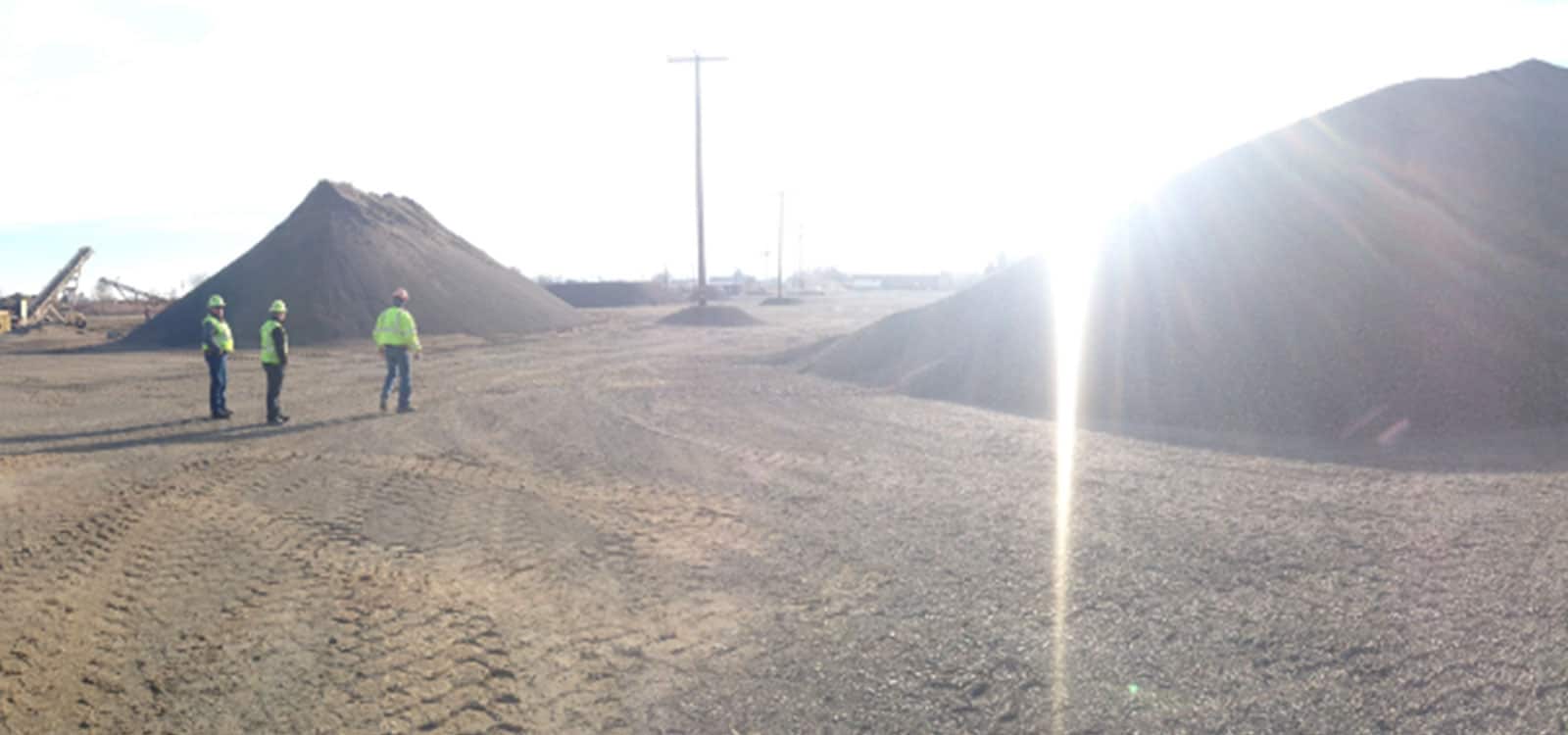May 21, 2014
Tips for Measuring Stockpiles on Sunny Days

June 21 marks the Summer Solstice for the Northern Hemisphere– however, for our customers in Australia and New Zealand, June 21 is also the date of their Winter Solstice.
Our customers in both hemispheres are taking advantage of the available sunshine to make as many stockpile measurements outside as possible. As the days get warmer and longer, this opens up the ability to measure earlier and later, which is much more comfortable to do when Summer temperatures rise mid-day.
However, when the sun is lower on the horizon sometimes our customers encounter sun flare. Sun flare (or glare) might make a photograph look especially artistic for personal use, but flare not a desired effect when making stockpile measurements using an iPhone.

Here are a few field-tested solutions to help you counter sun flare during measurement.
Collect When The Sun Is High
If possible, collect data during the day while the sun is not low on the horizon. This helps prevent both washed out imagery as well as lens flare.
It can be helpful to shield the top of your iPhone with a hand or other object such as a clipboard (just take care not to have the object interfere by coming into view of the video). Tilting the camera slightly forward or backward if the sun is directly behind the pile from you can be useful, but requires some extra care as you want to ensure that you keep the pile itself in the frame.
Does the Position of the Sun Affect Results?
Lens flare can greatly reduce the quality of your imagery and the accuracy of your resulting measurement.
For customers in the Southern Hemisphere, we’ve found that the best way to deal with the sun during the short months of the year is to keep the top of the pile close to the top of the video screen– even if you cut off the top of the pile for a second or two. This should not impact the results (just avoid doing something like completely cutting off the pile for any extended amount of time longer than 2-3 seconds).
A good way to practice and prepare for sun flare is to go to the back-side of a pile when the sun is out and low on the horizon– usually early morning or late afternoon. Use your iPhone and experiment by taking short videos using the above techniques. You can then review the video following each practice measurement to better understand the impact these variables have on a video. Observe for instances in which either the sun washes out the video in light and sun rays, or whether the bright sky in the background has made the pile’s appearance to be very dark with hard to see texture. Practice and a bit of patience will really pay off here.
Safety On-Site
Also remember to be aware of your surroundings when you are measuring, especially if you are around moving machinery. Drivers can be blinded by the sunlight. Glare is at its worst when the sun is low, toward the horizon. That typically is the hour or so after sunrise and before sunset.
Most vehicles have blind spots that obscure the driver’s vision. This is especially true in large construction vehicles and haul trucks, but it is also true in smaller vehicles. Mirrors and cameras have been used to minimize the problem, but accidents still occur. Dirty mirrors and lenses, poor lighting conditions, and driver fatigue can cause the driver not to see other vehicles and workers on foot.
The Stockpile Reports team is happy to assist you during these brighter, sunnier days. Contact us if you need more information about how to prevent (or minimize) sun flare.
This is an excellent time of year to measure stockpile inventory. If you are not a current client and are interested in finding out how our system benefits your team, please contact us.
Stay In the Know
Be the first to know about the latest Stockpile Reports news and features.